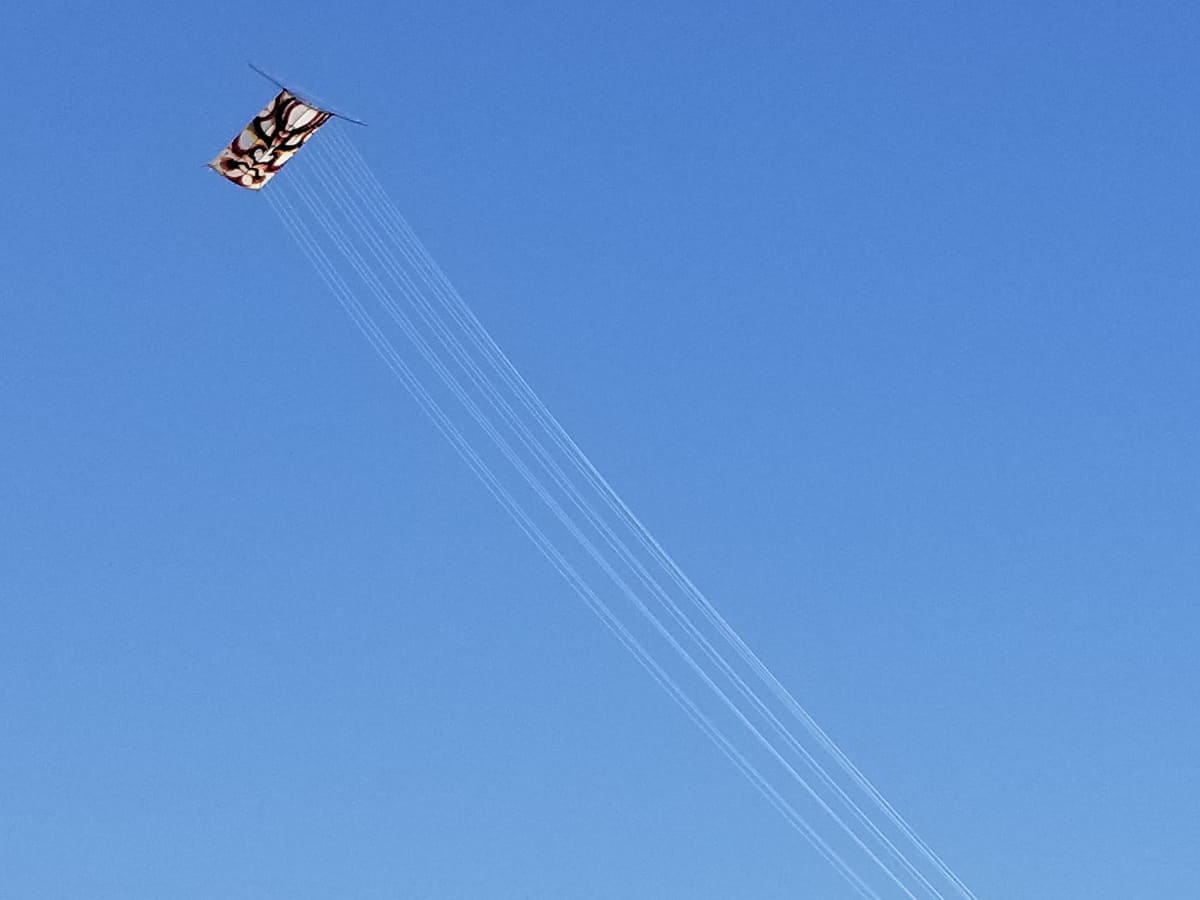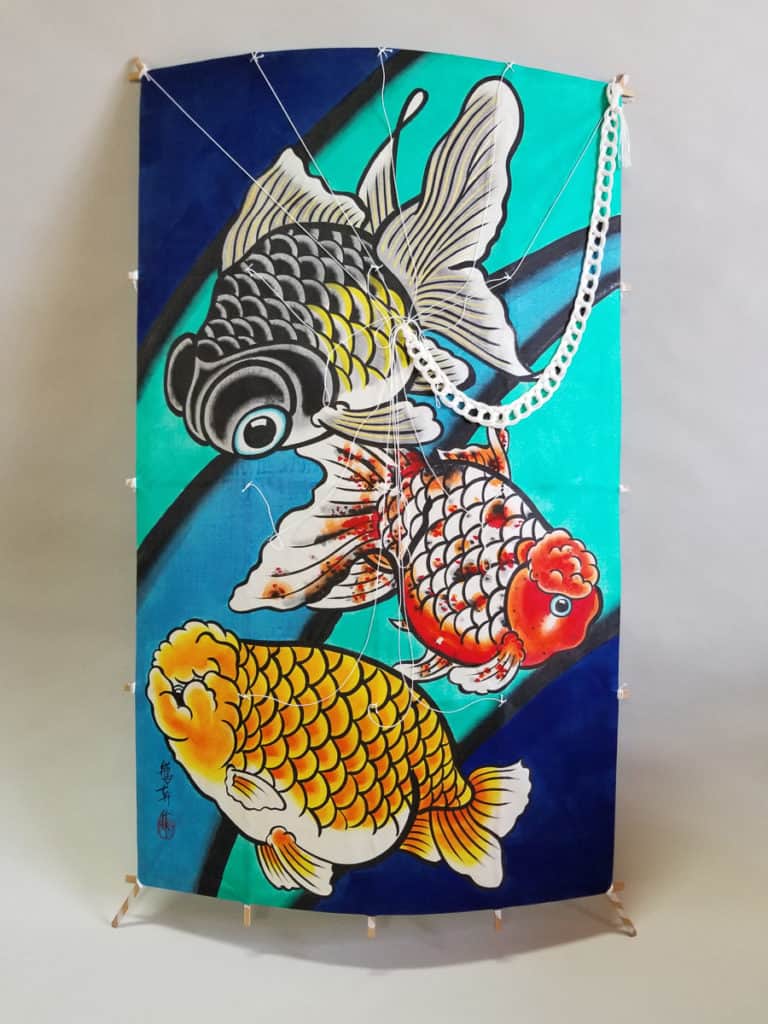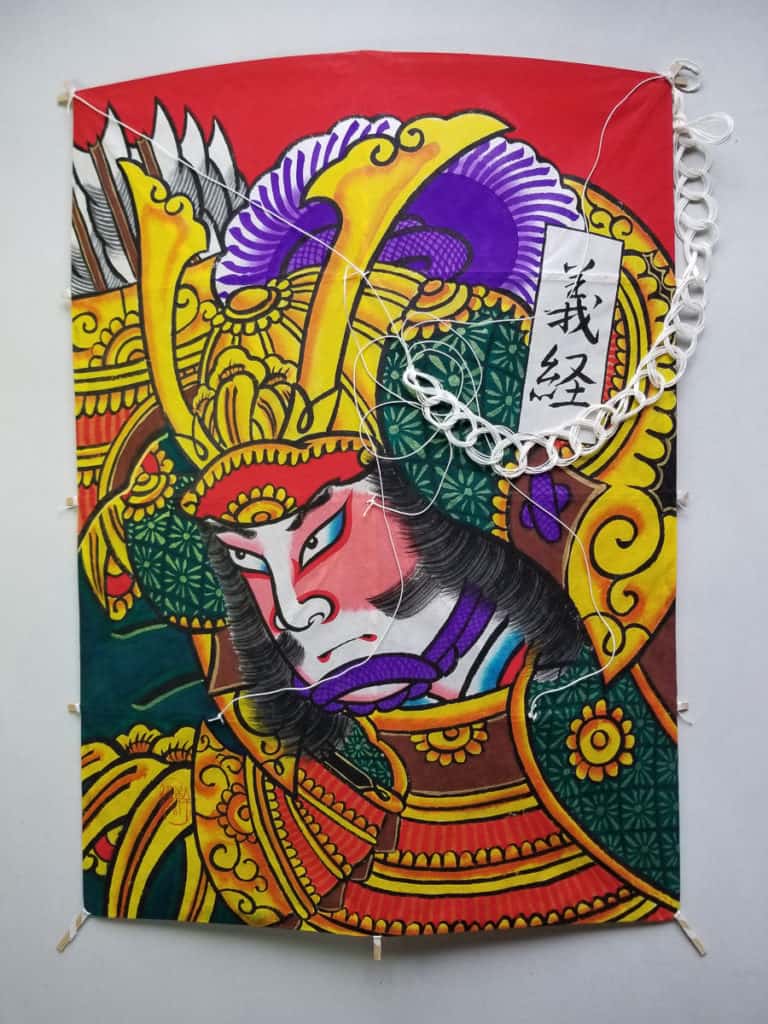Our pursuit of beautiful and thoughtful objects takes us far beyond the gallery. From kite-maker Mikio Toki, we learn that art taken to the skies can be a powerful way of giving thanks.
Mikio Toki is one of Japan’s few professional kite makers. He is a regular guest at kite festivals around the world and has over 42 years of kite making experience. Inspired by ukiyo-e, Edo kites are rectangular bamboo kites with coverings made of washi paper, painted in bold, vibrant colours. Often depicting kabuki actors, legendary heroes and kanji characters, Edo kites have been popular since they were first created in the 1700s.
- Mikio Toki
- Mikio Toki
- Mikio Toki
✿ How did you learn to make kites?
I made Edo kites myself when I was young and had the opportunity to meet master kite flyers. The Edo kites enchanted me, so I studied with a master.
(どのように凧作りを学びましたか?)若い頃、江戸角凧を自身で作り、揚げる名人達に会う機会があり、江戸角凧に魅せられて、師匠から学びました。
✿ What is the greatest challenge in making a kite?
Making new styles while also upholding tradition.
(凧を作る中での一番の挑戦はなんですか?)伝統を守りつつ、新しいスタイルの凧を作る事。
✿ Can you describe an event where a kite is flown as an expression of thanks?
In Japan, we have a custom of flying kites for the Boy’s Day celebration on May 5th (Translator’s note: Boy’s Day is the traditional name of what is now called Children’s Day). Kites are made to give thanks for the birth of a couple’s eldest son and pray he grows up into a healthy and successful adult. [✿ We assume this is changing now to celebrate the birth of all children.]
(感謝の表現として行われる凧あげイベントに関して教えてください)日本では、夫婦にその家を継ぐ長男が生まれた時に、その子が生まれたことに感謝し、その子が.健やかの育ち、立派な大人になるように願い、その子のために凧を作り、5月5日の端午の節句に揚げる習慣がまだあちこちに残っています。
✿ What is the Japanese name for kite-maker?
A kite-maker is called a takoshi. In Tokyo, a person who makes Edo kites is called an Edo takoshi.
(凧を作る人を、日本語で何と呼びますか?)「凧師(たこし)」と言います。東京では「江戸角凧」を作って揚げる人を「江戸凧師」と言います。
✿ Do you sell your kites? Are some purchased as artworks to be hung on a wall rather than flown?
I do sell my kites. When I was young, there weren’t tall buildings even in a metropolis like Tokyo, so there were vacant land and fields where kites could be flown by both children and adults on holidays like New Year’s. But now, since there are so many skyscrapers, there is little open space, and the numbers of takoshi in Tokyo are dwindling. A generation of children who did not grow up flying kites have now become adults, so, unfortunately, the number of people who use them as decoration is greater than those who fly them. But the kites I make can certainly be used for flying. For clients who wish to fly their kites, I test fly the completed kite and give them a fine thread that anyone can use for flying. I want people to enjoy flying their kites as much as possible.
(土岐さんは、作った凧を販売しますか?購入された凧は、飛ばされるよりも作品として壁に飾られるのでしょうか?)販売しています。私が子供の頃は東京のような大都会でも、高いビルも無く、凧揚げが出来る空き地や広場などがあちこちにあり、正月などに子供や大人が凧揚げを楽しんでいましたが、現在、東京は高層ビルが立ち並び、空き地も少なくなって、東京の凧屋さんもだんだん姿を消し、子供の頃に凧揚げをして遊んだことが無い世代が親になる時代で、残念ながら揚げる人より飾る人が多くなってしまいました。私の作る凧は、もちろん揚がるように作ります。揚げたいというお客さんの希望があれば出来上がった凧を一度試し揚げをして、誰でも簡単に揚がるように糸目を調節してからお渡しします。凧は出来れば空へ揚げて楽しんでいただきたいので。
✿ What do you think is the value of a kite?
Since kites became popular in Japan during the Edo period after passing through China and the Korean Peninsula, they have been flown throughout Japan at New Year’s and events such as Boy’s Day on May 5th. Kites are an important item in Japanese culture. I continue my work making kites with the goal of passing on this culture on to the next generation.
(凧の価値について、どのように思いますか?)大昔、中国から朝鮮半島を経て日本へ伝わった「凧」は江戸時代に大流行して以来、正月の子供の遊びとして、また5月5日、端午の節句の行事として日本全国で揚げられてきました。凧揚げは大切な日本文化の一つです。私もこの文化を次の世代に伝えたいという思いで凧を制作し続けています。
The exhibition, Edo in the Sky: Traditional Kites of Japan, features over 30 handmade kites by master craftsman. The exhibition will run at The Japan Foundation, Sydney from July 10 to October 12 2019.







Comments
Beautiful interview, brought back memories of childhood and looking forward to see these hopeful kites someday 🙂